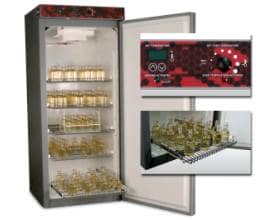 |
|
Min Xu, MD, |
BioFire Diagnostics Inc, Salt Lake City, reports that new data from Seattle Children’s Hospital, Seattle, demonstrates how the FilmArray Respiratory Panel (RP) improves detection and reporting turnaround time for respiratory viruses.
Investigators at Seattle Children’s were able to achieve a greater than fourfold reduction in average and median turnaround time using FilmArray RP compared to standard processes, they note. Additionally, 81% of patients testing positive for influenza A or influenza B received a prescription of Tamiflu® (oseltamivir) within 3 hours of discharge. Current guidelines call for the medication to be given within 48 hours of symptom onset in order to be most effective.
“The implementation of FilmArray RP in our core laboratory significantly decreased the time required to detect and report respiratory viruses,” says investigator Min Xu, MD, PhD, Seattle Children’s. “Patients with influenza were treated rapidly and appropriately, which had previously not been possible.
“Detection of other viral agents assisted physicians in the differential diagnosis of respiratory syndromes and isolation of patients admitted to the hospital,” she adds. “Overall, we implemented a molecular-based efficient diagnostic testing process in our core laboratory for the first time. Our results demonstrate that molecular technology can be successfully deployed in a nonspecialty, multidisciplinary core laboratory.”
The study, titled “Implementation of FilmArray Respiratory Viral Panel in a Core Laboratory Improves Testing Turnaround Time and Patient Care,” published in the January 2013 issue of the American Journal of Clinical Pathology, included 2,537 specimens from pediatric patients prospectively collected and tested between December 2011 and April 2012. The average and median turnaround times were 1.6 and 1.4 hours, respectively, in contrast to 7.0 and 6.5 hours documented one year previously at an onsite reference laboratory using direct fluorescence assay (DFA). During the study period, rhinovirus was detected in 20% and coronavirus in 6% of samples using the FilmArray RP. These viruses would not have been detected with DFA, according to the company.
[Source: BioFire Diagnostics]




